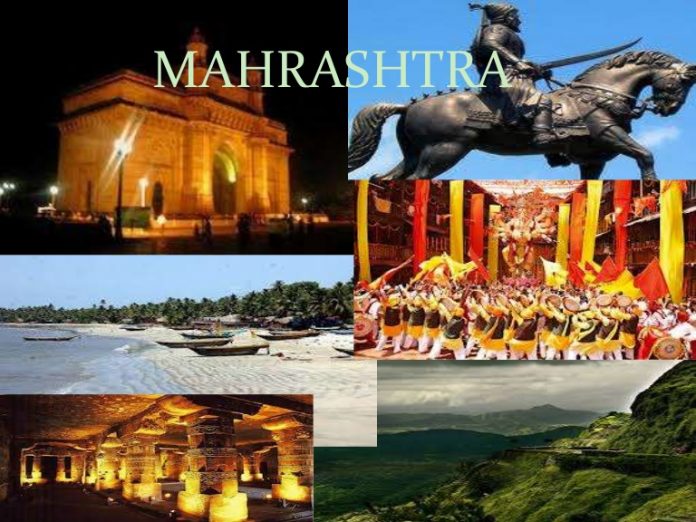We are intending that you all guys are enlightened about the state which is known as the Entertainment Capital of India. The state is called the land of scholars, saints and actors. Maharashtra is a land full of untouched, unsullied and unlimited fascinations. Maharashtra is a state best described as a land of beaches, mountains and wonderful food. In this article, we’ll dive deep into the amazing and marvellous aspects of Maharashtra.
Which state in India has the largest road network in the country? In which state The Mysterious Lonar Lake situated? Which state has the second largest slum in Asia?
Let’s start exploring the state by answering the above quiz along with some more breathtaking facts about Maharashtra.
Table of Contents
STATE SYMBOLS OF MAHARASHTRA Maharashtra GK Notes:
Maharashtra was formed on 1 May 1960 by splitting into majority Marathi-speaking Maharashtra and Gujarati-speaking Gujarat, respectively. Maharashtra is one of the most developed and prosperous Indian states. The term MAHARASHTRA derives from the word Maha means “great” and Rashtra means “nation/dominion”. Maharashtra has a richly diverse culture and heritage. It has its own identity in India for its festival, great monuments and numerous old temples.
Before digging deep into the state, let’s take a glance at the State Symbols.
| State Capital | Mumbai |
| State Flower | Jarul |
| State Tree | Mango Tree |
| State Animal | Indian Gaint Squirrel |
| State Bird | Yellow-footed Green Pigeon |
| State Dance | Lavani |
| State Governor(PRESENT) | Bhagat Singh Koshiyari |
| State Chief Minister(PRESENT) | Udhav Thackeray |
Let’s start with the utmost aspect i.e., social, cultural and traditional attributes of Maharashtra.
CULTURE Maharashtra GK Notes:
Maharashtra is the third largest state of India. Maharashtra is famous for its unique customs and practices. Some parts of Maharashtra are developed while others are still developing, but the thoughts of all the people are united. It is no secret that the people of Maharashtra take pride in their diverse culture, after all, Marathi culture is definitely special. People of the state celebrate all major festivals irrespective of their religion and honestly, that just shows the unity and brotherhood among them.
- It has a long history of Marathi saints of Varakari religious movement, such as Dnyaneshwar, Namdev, Chokhamela, Eknath and Tukaram which forms one of bases of the culture of Maharashtra or Marathi culture.
- The folk music and dances of Maharashtra are Lavani dance, Koli, Powada and Banjara Holi dance. Lavani is a genre of music popular in Maharashtra. It is a combination of traditional song and dance, which particularly performed to the beats of Dholki, a percussion instrument. Lavani is noted for its powerful rhythm.
- The Food of Maharashtra is from sweet to mildly spicy to spicy. Some of the dishes like vada pav, pav bhaji, missal pav and pooran pori have become famous throughout the world. Shrikhand is a popular dish that is said to be originated in Maharashtra.
- There are many significant monuments in Maharashtra like Bibi ka Maqbara, Ajanta Ellora caves, Gateway of India which are influenced by different architectural styles. In Mumbai, formerly known as Bombay, the majority of the architecture is influenced by the British style of architecture which is seen in Gateway of India and Chhatrapati Shivaji Terminus.
- Maharashtra is famous for its Caves and rock-cut architecture as in Ajanta Ellora Caves that is one of the UNESCO as World Heritage Site. Some of the temples such as Trimbakeshwar in Nashik, Bhimashankar Temple in Pune, etc in Maharashtra are over 1000 years old.
- The official language of Maharashtra is Marathi. Cities in Maharashtra are Metropolitan and are a blend of many cultures and use English as their official language. Most of the people in Maharashtra are multilingual and usually speak both Marathi and Hindi.
- Some festivals like Nag Panchami, Ganesh Chathurthi, Gokul Ashtami, Makar Sankranti, Gudi Padwa, Bhau Beej, Ellora Festival Narali Pournima and Shivaji Jayanti have originated in Maharashtra.
- The artificers of the state are very meticulous and intricate in their work. Mashroo and Himroo, made from cotton and silk famous in Aurangabad, Maharashtra.
- The Kolhapuri Chappal from Kolhapur is known for their simple style, durability, quality of the leather and its design.
- Mumbai is known as the “City of Dreams” or “Mayanagri”. Many people from other states have flocked to Maharashtra especially to Mumbai due to the wide array of career opportunities.
- Maharashtra has very well adapted to the Bollywood industry. Many famous actors and actresses like Amitabh Bachchan, Shah Rukh Khan, Salman Khan, Priyanka Chopra, Kareena Kapoor and Deepika Padukone, reside in this state. Hindi (Bollywood), English and Marathi films are a great hit among the viewers.
Let’s jump to the next aspects of the Maharashtra i.e. Geography
GEOGRAPHY Maharashtra GK Notes:
Maharashtra is a state in the western sea coastline of India occupying a substantial portion of the Deccan Plateau. Its shape roughly resembles a triangle, with the western coastline forming the base and its interior narrowing to a blunt apex to the east. Maharashtra is the third-largest state by area and the second-most populous state in India.
- Total Area: 307,713km2
Area Rank in India: 3rd
- Total Population: 112,374,333
Population Rank in India: 2nd
Latitude extension: 13° N to 20.5° N
Longitudinal extension: 70° E to 80.5° E
- Maharashtra is bounded by the Indian states of Gujarat to the northwest, Madhya Pradesh to the north, Chhattisgarh to the east, Telangana to the southeast, Karnataka to the south, and Goa to the southwest and by the union territory of Dadra and Nagar Haveli and the Arabian Sea to the west.
- Maharashtra’s capital, Mumbai is an island city on the western coast, connected to the mainland by roads and railways. Maharashtra has the largest road network in India with a total road length of over 2, 67,500 km.
- Forests comprise 17% of the total area of the state. Forests cover less than one-fifth of the state and are confined to the Western Ghats, mainly their transverse ranges, the Satpura Range in the north, and the Chandrapur region in the east.
- On the coast and adjoining slopes, plant forms are rich with lofty trees, variegated shrubs, and mango and coconut trees. The forests yield teak, bamboo, myrobalan for dyeing, and other woods.
- Maharashtra has 36 districts, 355 talukas, 535 cities, 63,663 villages, 6 administrative divisions.
- Maharashtra is divided into five geographic regions.
- Konkan – (Konkan Division)
- Paschim Maharashtra better known as Desh – (Pune Division)
- Khandesh – (Nashik Division)
- Marathwada – (Aurangabad Division)
- The Godavari and the Krishna are the two major rivers in the state. The other main rivers of the state are Bhima, Tapi-Purna and Wardha-Wainganga. Since the central part of the state receives low rainfall, most of the rivers in the region have multiple dams. Maharashtra has around 1821 notable large dams.
Climate Maharashtra GK Notes:
The climate is subtropical to tropical and characteristically wet-dry with local variations. Four seasons are normal in this state:
- March–May (hot and dry)
- June–September (hot and wet)
- October–November (warm and dry)
- December–February (cool and dry)
- The coastal regions enjoy equable temperatures; monthly average temperature at Mumbai is in the low 80° F (about 27–28 °C).
- Pune is situated higher up on the plateau; experiences cool temperatures throughout the year. In the interior, average summer temperatures reach into the low 100° F (about 38–41 °C), and winter temperatures average in the low 70s F (about 21–23 °C).
Soil type:
The soil status of Maharashtra is residual, derived from the underlying basalts. In the semi-dry plateau, the regur (black-cotton soil) is clayey, rich in iron and moisture-retentive, though poor in nitrogen and organic matter. The important soil types found in the basin are black soils, red soils, laterite and lateritic soils, alluvium, mixed soils, red and black soils and saline and alkaline soils.
Let’s discuss the Government and Politics of Maharashtra.
GOVERNMENT AND POLITICS Maharashtra GK Notes:
The Government in the state of Maharashtra is organized on the parliamentary system with a bicameral legislature consisting of the Maharashtra Legislative Assembly and the Maharashtra Legislative Council. There are national and regional parties in the state, serving different demographics, such as those based on religion, caste, urban and rural residents. The politics of the state are dominated by the numerically strong Maratha–Kunbi community.
- The governor is aided and advised by the Council of Ministers which is led by a chief minister and is responsible for the legislature, which consists of two houses: the Legislative Council and the Legislative Assembly. Both bodies meet for regular sessions in Mumbai and once annually in Nagpur.
- Executive authority in the state is exercised by the cabinet, headed by the chief minister.
- The judiciary of the High Court headed by the chief justice and a panel of judges is situated in Mumbai. The branches of the court are also at Nagpur and Aurangabad.
- Maharashtra comprises three conventional regions: Western Maharashtra, Vidarbha, and Marathwada. Power is devolved to large city councils, district councils (Zila Parishad), sub-district (Taluka) councils, and the village parish councils (Gram panchayat).
Representation of Maharashtra in Parliament:
Assembly seats (bicameral): 288
Rajya Sabha: 19
Lok Sabha: 48
First Governor of Maharashtra:Raja Sir Maharaj Singh
First Chief Minister of Maharashtra: Yashwantrao Balwantrao Chavan
SOME INTERESTING FACTS ABOUT MAHARASHTRA:
- The mysterious lonar lake is the only saline soda lake on earth that was created when a meteor that hit the earth almost 52,000 years ago.
- The railway station of Navapur is built in two states: half is in Maharashtra and the other half is in Gujarat.
- India’s entire gold assets are kept in the Reserve Bank of India at Nagpur.
- It is believed that Badminton was invented in Pune, Maharashtra during British rule.
- The First train in Asia was started in Maharashtra from Mumbai to Thane on 16 April 1853.
- Dharavi is the second largest slum in Asia and is also considered as the most densely populated area on earth.
CONCLUSION
Hope this blog made most of your facts clear about one of the most developed states of India, Maharashtra. In our next blog, we will be studying about the other important aspects of Maharashtra.
In which state of India the largest planned city of the world is situated? Which city is called as City of Gates in India? Which state has the largest proportion of taxpayers in India?
In the next blog, the facets correlated with these questions will be answered certainly. If you don’t want to miss it, click here – Know your State ‘Maharashtra’ – Part 2. We hope it will help you in the preparation of your competitive exams such SSC 10+2, SSC CGL, CDS, NDA, etc.
Thank You




